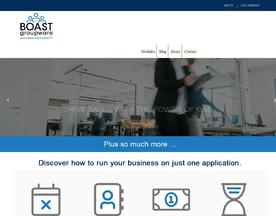Ah, the world of business acronyms! If you’ve ever stared blankly at a report, email, or meeting memo, wondering what on Earth that collection of letters stood for, I promise, you’re not alone. One acronym that’s been flying around a lot lately is “RFQ”. Ever caught yourself whispering, “What’s an RFQ anyway?” Well, my friend, you’re in for a treat because today, we’re diving deep into RFQs: what they mean, why they matter, and how you can master them.
RFQ meaning? “Request For Quotation” – a formalized process in which businesses solicit quotes for products or services from suppliers. It’s a pivotal tool in business procurement and vendor relationships.
When you’re hungry and decide to order pizza, you might call up a few pizza joints to compare prices and deals, right? Think of an RFQ (Request For Quotation) as the business world’s way of doing the exact same thing – only instead of pizzas, we’re talking about potentially million-dollar deals, contracts, and products or services! These documents can help a business decide which vendor to use.
Understanding the RFQ process is crucial for businesses that want to optimize their procurement processes, secure the best deals, and foster healthy relationships with their suppliers. Without an RFP, companies must go through a less formal process that requires a project manager to research other vendors. Now, let’s slice up this RFQ pie and serve it piping hot.
Key Points:
RFQ stands for “Request For Quotation”.
It’s a tool businesses use to solicit price quotes from potential suppliers.
Essential for optimizing procurement and fostering supplier relationships.

What Exactly is an RFQ?
An RFQ is a formal document that organizations send to suppliers, asking them to provide a quotation or price for a specific product or service. Typically, this is used when the company knows precisely what they want but needs to understand the cost from different potential vendors.
In addition to pricing, RFQs may include details such as payment terms and contract terms, factors that could influence a company’s bid selection, submission deadline, and the like.
A Request for Proposal (RFP) is the most formal and intensive of the three for both the requestor and the vendor. RFPs have strict procurement rules for content, timeline and vendor responses and are used when the request has a specific project or problem.
When a company receives a quote in response to an RFQ, it is not an offer nor a binding contract.
Key Points:
RFQ is a formal request for pricing.
Used when businesses have a clear idea of what they need.

Why Use an RFQ?
Ah, the million-dollar question – or potentially, the multi-million-dollar question! Why should a company put in the effort, time, and resources to issue an RFQ? Let’s break down the reasons, shall we?
Cost Comparisons:
Picture this: You’re at a market, and there are several stalls selling the exact type of apple you want. Wouldn’t you want to ask each of them their price to ensure you get the best deal? Similarly, in business, especially when dealing with large-scale purchases or contracts, the difference in price quotes from various suppliers can be significant. Collecting and comparing these quotations allows businesses to secure the most competitive prices, ensuring they don’t pay a cent more than they need to. When the purchase order is accepted and signed, the contract begins. An RFQ is the first step in submitting a request for proposal. Although these two documents are similar, RFQs typically ask for a more comprehensive price quote.
Clarifying Specifications:
It’s not just about the cost. An RFQ allows businesses to lay out the specifics of what they require – from product dimensions to service delivery timelines. This detailed specification ensures that all potential suppliers are clear about the expectations and can quote for the exact requirement. No misunderstandings, no discrepancies – just clear, transparent business. RFQs are essential for businesses that require a consistent supply of products with set specifications and standard, every time.
Vetting Suppliers:
Ever heard the saying, “The devil is in the details”? When suppliers respond to an RFQ, their professionalism (or lack thereof) shines through. How detailed is their quote? How quickly did they respond? Did they ask clarifying questions or just give a generic quote? All these nuances provide insight into the supplier’s operations, reliability, and how they might be to work with. In essence, the RFQ process serves as a preliminary vetting process, ensuring you only move forward with suppliers who align with your company’s standards and expectations.
Streamlining the Procurement Process:
Without an RFQ, the procurement process can be like navigating through a dark forest without a map. You’re not sure where you’re heading, and there’s a lot of guesswork involved. An RFQ lights the way. It structures the process, allowing for a methodical approach to vendor selection, ensuring all decision-makers have a clear and consistent set of information to base their choices upon. The RFQ process typically consists of four sections: The preparation phase The processing phase The awarding phase The closing phase
Key Points:
RFQs allow businesses to secure competitive prices by inviting multiple quotes.
They provide clarity on product or service specifications, eliminating potential misunderstandings.
The RFQ response quality can serve as an initial vetting tool for suppliers.
It adds structure and clarity to the procurement process, making vendor selection more streamlined and informed.

How to Create an Effective RFQ
Alright, so you’re sold on the idea of using an RFQ. But, how do you craft one that stands out and garners the detailed responses you’re after? Issuing an RFQ isn’t just about slapping together a document and sending it off. It requires thought, precision, and a sprinkle of strategy. Let’s dig into the nuts and bolts of creating an RFQ that’s bound to get you accurate and actionable quotes.
Define your Needs Clearly:
Before even beginning to draft your RFQ, sit down and map out exactly what you’re after. This might involve collaboration with multiple departments within your company. Are you sourcing raw materials, finished products, or services? Nail down specifics, such as quantities, dimensions, material types, and other critical attributes. The clearer you are at this stage, the fewer back-and-forth questions you’ll need to answer later on.
Set Clear Evaluation Criteria:
Let’s face it; once you send out your RFQ, you’re likely to be inundated with responses. But how do you sieve through them? Before you even get to this stage, decide on your evaluation criteria. Is it purely price-driven, or are other factors like delivery time, supplier history, and quality guarantees equally (or more) essential? Laying this out from the get-go ensures you have a roadmap for decision-making, and suppliers know what’s expected of them.
Include a Specific Deadline:
While it might be tempting to keep things open-ended, it’s in your best interest to set a clear deadline for submissions. This does two things. Firstly, it creates a sense of urgency for suppliers, ensuring you get timely responses. Secondly, it provides you with a timeline for your procurement process, helping with project planning and resource allocation.
Provide Contact Details for Queries:
No matter how detailed your RFQ is, suppliers will invariably have questions. To prevent these from becoming a bottleneck, assign a point person or a team to field these queries. Include their contact details – phone numbers, email addresses, and even specific office hours when they’re available. This not only streamlines the process but also portrays your company as organized and responsive.
Outline the Submission Process:
Beyond just sending a quote, how should suppliers present their information? Do you want it in a particular format? Are there specific documents or certifications you require alongside the quote? Maybe you have a portal they need to use, or perhaps there’s a specific sequence of steps they must follow. Spell it out. This ensures uniformity in responses, making comparisons a breeze.
Feedback Mechanism:
Mention in your RFQ if and when you’ll provide feedback to suppliers who don’t make the cut. While this isn’t a mandatory step, it’s a good practice that fosters goodwill and positive relationships in the industry.
Key Points:
Begin with a clear understanding of what you need, potentially involving multiple internal stakeholders.
Set your evaluation criteria in advance, so decision-making is systematic and less overwhelming.
Always have a fixed deadline to guide your procurement timeline.
Designate contacts for queries to ensure smooth communication with suppliers.
Clearly state submission requirements and steps for consistency.
Consider offering feedback to nurture positive industry relationships.

Software Tools to Aid in the RFQ Process
In this digital age, we’re lucky to have a plethora of tools at our fingertips to streamline and enhance various business processes. And yes, the RFQ process is no exception! Why do things manually and risk missing out on critical details when there are brilliant software solutions designed to aid in crafting, issuing, and managing RFQs? Let’s explore some of these tools that might just be the secret sauce to supercharge your procurement process.
ProcureWare
ProcureWare stands out for its comprehensive e-procurement platform. It not only helps in creating and distributing RFQs but also offers tools for supplier management, competitive bid analysis, and reporting. With an intuitive interface, it facilitates collaboration between buyers and suppliers, ensuring transparency and efficiency throughout the procurement lifecycle.
SynerTrade
SynerTrade offers a digital procurement platform that caters to various procurement needs, RFQ management being one of its key features. Its analytics capabilities are robust, providing insights that can help businesses make informed decisions. Plus, with cloud-based access, stakeholders can collaborate seamlessly, regardless of where they are located.
Bid Ops
This software boasts of using AI to automate negotiation. Yes, you heard that right! Bid Ops aims to optimize pricing using data-driven benchmarks, which can be a game-changer when evaluating RFQ responses. Beyond that, it offers features for supplier collaboration, ensuring a streamlined communication channel.
Scout RFP
Acclaimed for its user-friendly interface, Scout RFP simplifies the RFQ process by providing a platform where businesses can source suppliers, gather quotes, and analyze bid data all in one place. The platform promotes supplier collaboration and gives real-time insights, making it easier for businesses to navigate the often complex RFQ landscape.
Promena
Promena offers a range of e-sourcing tools, including RFQ management. One of its standout features is its risk management module. As we know, procurement isn’t just about finding the cheapest option; it’s about balancing cost, quality, and risk. Promena’s integrated approach ensures businesses have a holistic view when making procurement decisions.
Key Points:
Utilizing software tools can drastically enhance the efficiency and effectiveness of the RFQ process.
There’s a variety of tools available catering to different facets of the RFQ process, from supplier collaboration to bid analysis.
Many of these tools offer cloud-based solutions, ensuring accessibility and real-time collaboration, which are crucial in today’s globalized business environment.
Consider your company’s specific needs and challenges when selecting an RFQ software solution to ensure optimal benefits.

Frequently Asked Questions (FAQ)
How does an RFQ differ from an RFP (Request For Proposal)?
While an RFQ seeks quotes for a specific product or service, an RFP is more about finding solutions or strategies to a problem. RFPs are less about price and more about approach and methodology.
When should I use an RFQ instead of an RFP?
Use an RFQ when you know precisely what you need and are primarily interested in the cost. Opt for an RFP when you’re more focused on the methodology or approach and need expert input on solutions.
How detailed should an RFQ be?
As detailed as necessary. It’s vital to be clear about what you want to ensure accurate quotations. While an RFP gives more detailed information on the service itself, an RFQ mainly answers how much it costs
Is there a standard format for RFQs?
While there’s no one-size-fits-all format, most RFQs will include specifications, quantities, delivery timelines, evaluation criteria, a deadline, and contact details.
Can I negotiate after receiving an RFQ response?
Absolutely! The RFQ process often serves as a starting point for negotiations.
How do I choose the best quote from an RFQ?
Consider not only the price but also factors like the vendor’s reputation, past work, delivery timelines, and other relevant criteria you’ve set.
How often should I use RFQs?
As often as you need to ensure you’re getting the best deal and the right product or service.
Do all industries use RFQs?
While more common in manufacturing and large-scale procurement, any industry can use RFQs when they want to compare prices for a specified need.
Can small businesses benefit from using RFQs?
Certainly! Small businesses can leverage RFQs to ensure they’re getting competitive prices and building strong supplier relationships.
Is the lowest quote always the best choice?
Not necessarily. While cost is essential, other factors like quality, delivery time, and vendor reputation should also be considered.

Conclusion
Stepping back and taking a bird’s-eye view, the RFQ process may initially seem like just another piece in the vast procurement puzzle. Yet, its significance is undeniable. As we’ve navigated through the intricacies of RFQs, we’ve come to understand its role as the linchpin that holds the supplier-business relationship together.
From ensuring businesses land the best prices without compromising on quality, to acting as the first line of defense in vetting potential suppliers, the RFQ is more than just a request – it’s a strategic tool. A well-crafted RFQ not only garners competitive quotes but also sets the stage for a transparent and efficient procurement process. It’s akin to laying the foundation for a building; if it’s done right, everything that follows is smoother and more stable. If you know what type of features you want to see, you plan to choose a vendor based on price, and you don’t need a service plan or supported contract, an RFQ might be right for you.
Furthermore, we’re living in an era where technology is continuously evolving, providing tools that make our lives easier. The RFQ process, traditionally managed manually with paperwork, phone calls, and faxes, has been transformed by these technological advancements. The software tools we’ve delved into are just the tip of the iceberg. As businesses, tapping into these resources is not just smart; it’s essential for staying competitive and agile in today’s fast-paced global market.
To all the procurement professionals, business owners, and stakeholders reading this – the next time you’re about to dive into the RFQ process, remember its profound impact. Don’t rush it. Take the time to strategize, use the best tools at your disposal, and most importantly, value the relationships you’re cultivating. Because at the heart of every RFQ is a potential partnership that could propel your business to new heights















